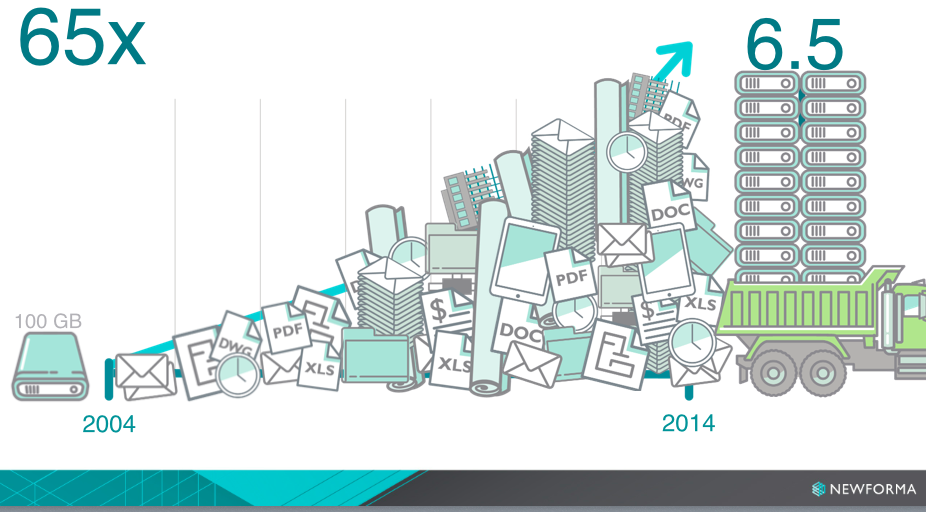C-Suite Corner: Newforma’s Ian Howell Peers ahead
by ROB McMANAMY | Jan 4, 2016
Note: This article is from the BuiltWorlds archives. Some links, text, and images may not appear as originally formatted.
Don’t be fooled by the New Hampshire address. While tech rivals surf the cyber shoals in Silicon Valley or dazzle with glitzy demos in Vegas or Paris, an unassuming lean giant has quietly grown in the White Mountains of New England, an hour north of Boston MA.

Howell: Recent travels validated market view.
Now in its 12th year, project information management specialist Newforma has survived the startup blues and weathered an epic global recession to emerge primed and ready for continued strong growth in 2016. At the helm sits Australian-born CEO Ian Howell, who along with the firm’s original six co-founders first breathed life into Newforma in 2004. Prior to that, he had served as director of AEC products and industry marketing at Autodesk from 1993-2000. He left there for an opportunity as a vice president with San Francisco-based Citadon Inc., an AEC dot.com startup funded by Bechtel and GE Capital and focused on enabling better communication and collaboration by hosting projects on the then-fledgling internet.
“Frankly, that is what my career has been about,” says Howell. “We started Newforma because even at that time, project information already was starting to overwhelm project managers, architects, owners and contractors. Our idea both then and now, was to use emerging technology to help project teams get a handle on how to manage the proliferation of project data.”

Howell has long been an advocate for improving communication across inter-disciplinary silos and among competing technologies. In fact, in 1996, he helped to found the International Alliance for Interoperability (now the buildingSMART Alliance), and then served 10 years on its board. Last month, we spoke with Howell just prior to the holidays. We caught him in both a reflective and forward-thinking mode, a condition that many of us –even non-thought leaders– often find ourselves in at the end of the year.
Having just returned from several weeks traveling across Asia and Australia, he was anxious to share with us some of the insights he had gathered. They validated industry trends that the Newforma leadership team had already identified and been tacking in the U.S. and Europe.
Today, in reviewing the industry from his own mountain view in Manchester NH, Howell likes to cite three numbers: 6.5, 68 and 97.

“That first number refers to 6.5 terabytes, the amount of digital data generated by a typical large design and construction project today, like one recently managed by a U.K. customer of ours,” he says. “In 2004, that number for a project of similar size was just 100 gigabytes. So, in just over 10 years, the amount of data has grown to 65 times as much!”
“Sixty-eight is the latest measure of ENR’s Construction Industry Confidence Index (CICI), which takes the pulse of hundreds of AEC executives on a quarterly basis,” notes Howell. “In 2009, that number was at 25. Since then, it had risen steadily before peaking last December at 78, the index’s all-time high. A year later, it has slipped a bit, but remains strong at 68.”
And what about 97?
Turns out it’s Howell’s favorite number. “That is the percentage of our customer renewal rate,” he says. “You have to earn that trust every year, so yes, we are rather proud of that one.”
And those customers, individually and collectively, are formidable in their own right. To date, they include such AEC heavyweights as HOK, Perkins + Will, SOM, RTKL, Haskell, SmithGroup, KPF, Harley Ellis Devereux, HNTB, HDR, Skender Construction, and many more U.S. firms. Overseas, Newforma’s leading international clients include Foster & Partners, BDP, Aedas, Hassell, Atkins, and Wood & Grieve, to name just a few.
Looking ahead, Howell sees a number of industry trends shaping the industry in the new year and beyond. Here are just a few:
- Labor shortage – Newforma, itself, is looking to hire 30 people, but that is reflective of a much wider shortfall. In fact, expect to see the balance of power in our industry actually shift this year to the subcontractors. They will hold the keys to most of the new jobs that will need to be filled;
- Cloud Adoption – According to Information Week, 94% of U.S. businesses in 2015 reported having “at least a hybrid cloud strategy” for remotely storing and accessing shared data. That was up from 74% in 2014. For the construction industry, the cloud offers a combination of best practice work-flows, stakeholder accountability, and mobile access;
- Security – Hand in hand with increasing reliance upon cloud-based services is the related rise in security concerns that emerge when multiple parties in diverse geographic areas gain access behind another’s company firewalls. So, a thoughtful security strategy is truly a must now;
- Geographic diversification – The classic strategy of “not having all your eggs in one basket” helped many firms survive the last global recession, so more are now adopting the approach as a safeguard. For example, SOM reports that 90% of the projects its people are working on now are outside of the U.S. But China’s economic downturn in 2015 caused many firms to close offices and reduce staff there, too. So, this strategy has to be nimble, as well;
- Data Sovereignty – More international work will require increased sensitivity to this growing issue. Several countries now require that all of the information about a project must be physically located within the borders of the host nation. For this reason, infrastructure providers like Amazon (with AWS) and Microsoft (with Azure) are having to set up designated servers in China, Australia, and Europe;
- Knowledge Mining – Every service industry is gathering more and more data about every one of its current and prospective customers. That will make the future solutions offered even more tailored to their specific needs. So the competition will become tighter and more focused on satisfying customer needs that are now even more of an open book for vendors.
These topics represent just a sampling of what Newforma expects to see in 2016. To see how the firm responds to each of these trends, and more, Howell suggests people follow the firm’s own blog for additional insights. For now, though, he is just excited to share his enthusiastic vision of a more collaborative, efficient and secure future for our industry worldwide.
“To date, we have had more than 1,400 companies use our products to manage close to two million projects,” he notes. “Our servers have indexed nearly five billion files, and facilitated the sharing of that information with well over a million project team members.”
Not bad for a global tech firm that’s still content to call New Hampshire its home.



Discussion
Be the first to leave a comment.
You must be a member of the BuiltWorlds community to join the discussion.